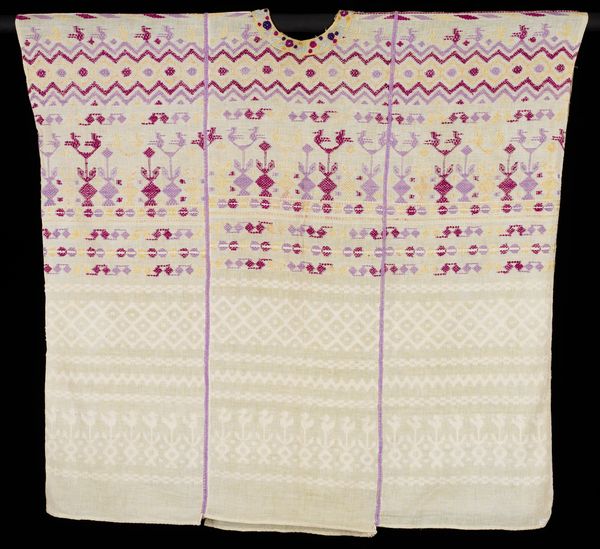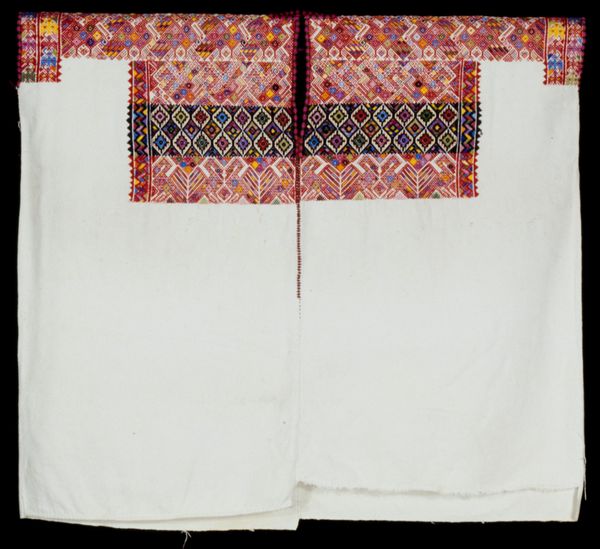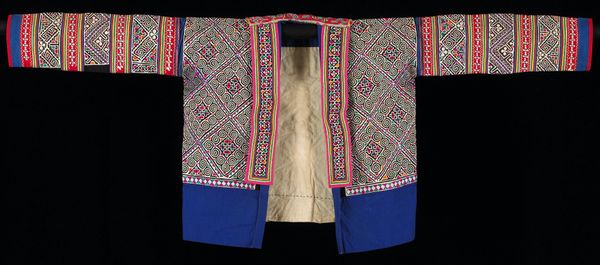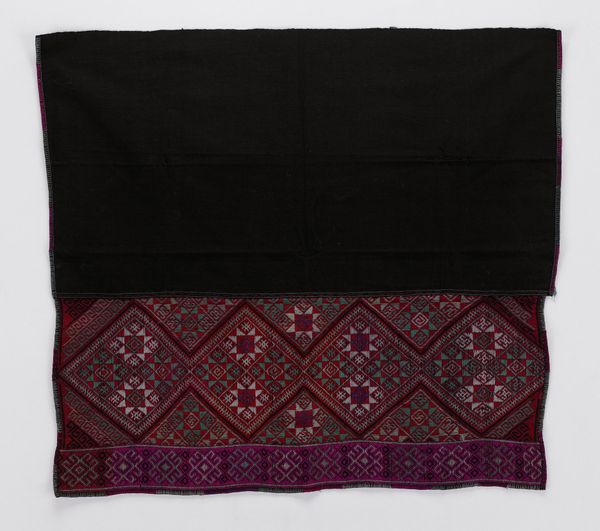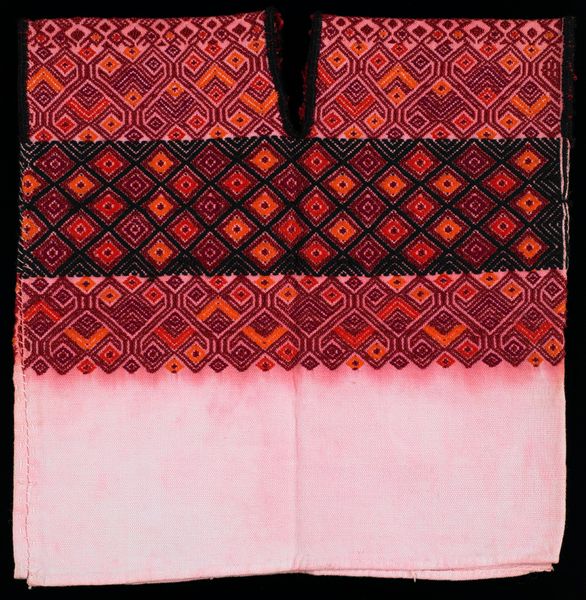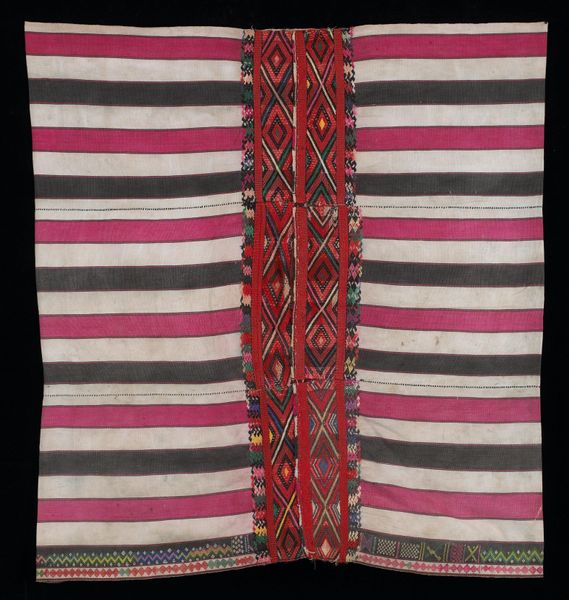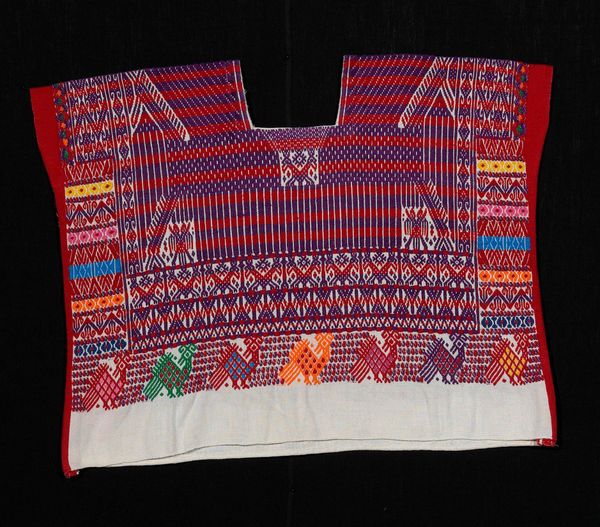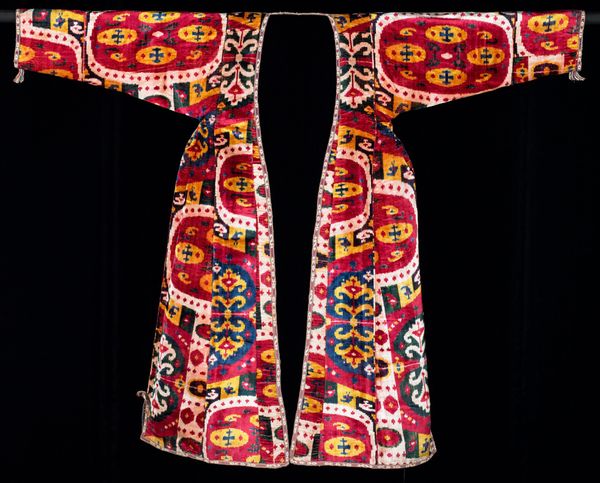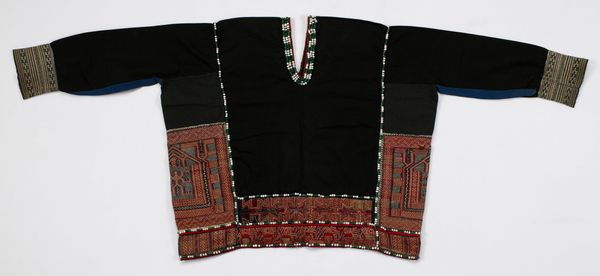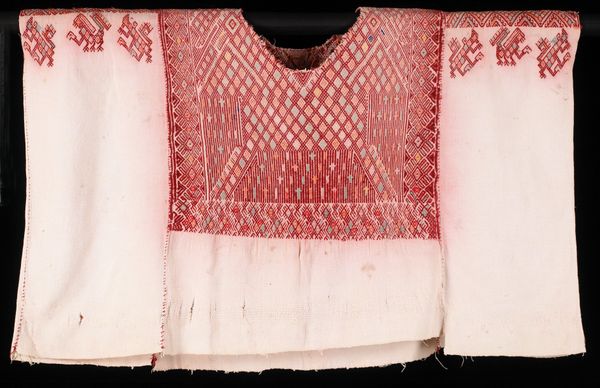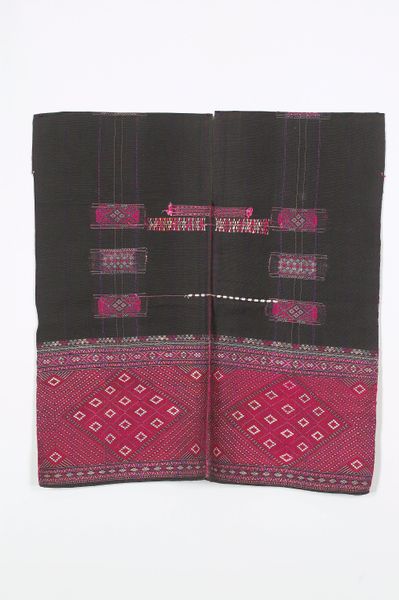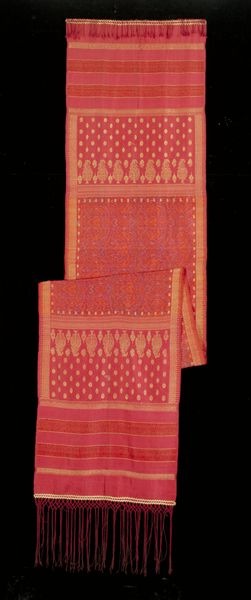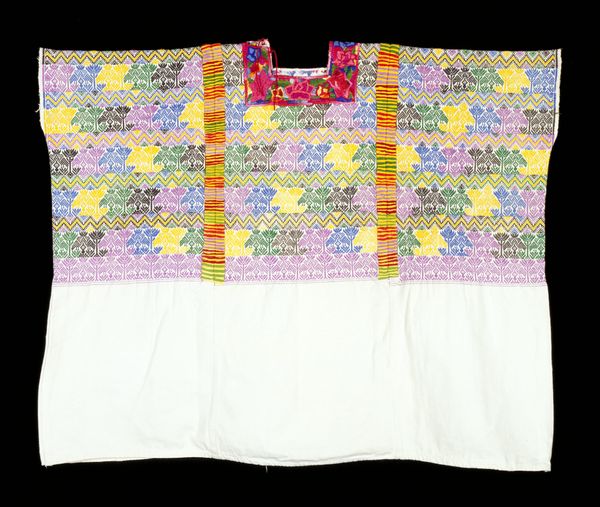
fibre-art, weaving, textile, cotton
#
fibre-art
#
weaving
#
textile
#
cotton
#
textile design
#
indigenous-americas
Dimensions: 31 3/8 x 33 in. (79.69 x 83.82 cm)
Copyright: Public Domain
Curator: Here we have a Ceremonial blouse, or Huipil, likely woven sometime between 1930 and 1940. It's currently part of the collection here at the Minneapolis Institute of Art and is a remarkable example of textile work. Editor: My first impression is how strikingly it’s divided. The upper section explodes with vibrant purples and intricate patterning, while the lower portion presents a serene expanse of white. The contrast is quite powerful. Curator: Indeed. From a formal perspective, note the precision of the geometric forms. The diamonds, chevrons, and meticulously aligned dots are not merely decorative. Observe how they create rhythm and visual hierarchy. Editor: To me, the motifs read as more than just patterns. Consider the lozenges, for example, echoing perhaps the cycle of life or celestial symbols. The Huipil served more than just a functional role, but likely conveyed profound cultural or spiritual meanings. Curator: Undoubtedly, yet the tension between the constructed geometry and potential symbolism makes for compelling viewing. We must also attend to the piece’s materiality – the blend of cotton, silk, and potentially other fibers create subtle textural shifts. How the light catches each woven segment matters, I suggest. Editor: Absolutely. And thinking anthropologically, these textiles record and transmit communal knowledge. We must ask: What specific myths or origin stories do these forms narrate? Who was the likely wearer, and what position did she hold within her community? Curator: Of course, understanding that history illuminates the context within which we may observe this artifact as art. We can't separate form from function. Editor: It also makes me consider how the visual vocabulary speaks to broader aesthetic traditions. Perhaps the geometric rigor links back to ancient Mayan glyphs or cosmological diagrams. It begs the question, are there contemporary iterations of this visual language in Indigenous art today? Curator: I find that question somewhat irrelevant, to be honest. It seems a somewhat spurious exercise to suggest continuity that may, or may not exist. As it is, however, the structural integrity remains compelling on its own terms. Editor: A valid point, but to truly appreciate this work, for me at least, we need to appreciate it on both of these terms. Curator: Perhaps so. I appreciate that tension between the formal construction and iconographic analysis—it yields unexpected dimensions to a seemingly simple textile.
Comments
No comments
Be the first to comment and join the conversation on the ultimate creative platform.
